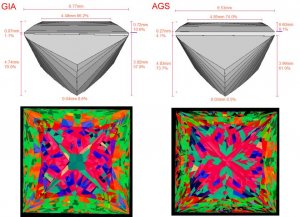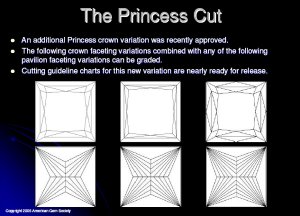I looked at the First Light Card
This report only shows numbers, but no relationship as to what the numbers mean. I think I''ve seen something that stated the limits of each number rating but it isn''t on the report. No grading as to Excellent to Commercial grade mentioned in this one.
I looked at the Light Performance Report on your site.
I see it reports numbers and it has a "rating" system at the bottom using letters.
Commercial is abbreviated CM. While for us in this discussion, we assume what that means, but would a consumer not familiar with the system.
Also I looked at the sample image which does not show much in the way of optical symmetry, yet it is rated Very Good.
I will grant you I''ve seen attractive stones that do not have the most "aligned" symmetrical patterns, so I find this confusiing as what this is reporting.
My opinion of this is that the report really needs to be more than just the credit card which explains the grading system IMAGEM is using. Constructively my take on this is that it needs a full page style report. Maybe the IMAGEM does that and I haven''t seen it.
Rockdoc
This report only shows numbers, but no relationship as to what the numbers mean. I think I''ve seen something that stated the limits of each number rating but it isn''t on the report. No grading as to Excellent to Commercial grade mentioned in this one.
I looked at the Light Performance Report on your site.
I see it reports numbers and it has a "rating" system at the bottom using letters.
Commercial is abbreviated CM. While for us in this discussion, we assume what that means, but would a consumer not familiar with the system.
Also I looked at the sample image which does not show much in the way of optical symmetry, yet it is rated Very Good.
I will grant you I''ve seen attractive stones that do not have the most "aligned" symmetrical patterns, so I find this confusiing as what this is reporting.
My opinion of this is that the report really needs to be more than just the credit card which explains the grading system IMAGEM is using. Constructively my take on this is that it needs a full page style report. Maybe the IMAGEM does that and I haven''t seen it.
Rockdoc






















300x240.png)